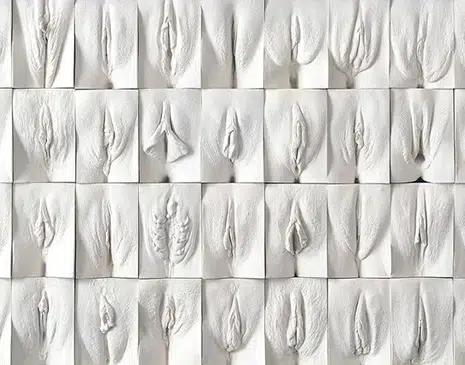In 2022, we interviewed Jamie McCartney, artist and creator of The Great Wall of Vulva. Read on to learn about the art installation helping women realise they are normal downstairs.
Created by British artist Jamie McCartney in 2006, The Great Wall of Vulva is a large-scale art installation designed to challenge the negative, judgemental, and often distorted view of female genitalia prevalent in mainstream media. Featuring plaster casts of 400 different vulvas, the installation is helping to change how people think about and perceive the vulva. Ultimately leading to more positive and healthy attitudes toward women’s bodies.
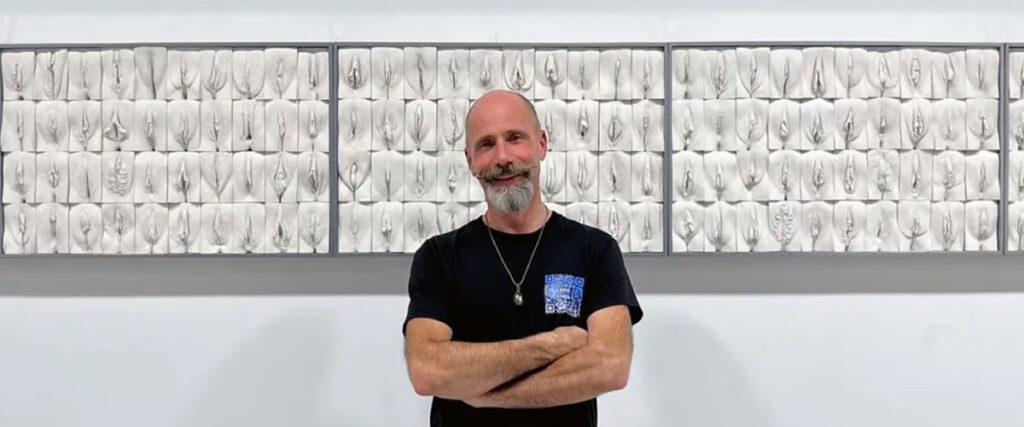
The artist
Jamie McCartney is an artist and sculptor from the UK. He has a passion for figurative art, and his work often focuses on the human body and the beauty of the female form. Through exploration of the relationship between the body and gender, his sculptures often feature abstract or distorted elements to challenge traditional notions of beauty and femininity.
Beyond his sculpting work, McCartney has created photography, paintings, and installation pieces and has exhibited his work around the world, including at the Saatchi Gallery in London, The Brooklyn Museum in New York, and the Grand Palais in Paris. He is a passionate advocate for body positivity and self-acceptance, and he hopes that his work will help to break down taboos around the female body and empower women to embrace their sexuality.
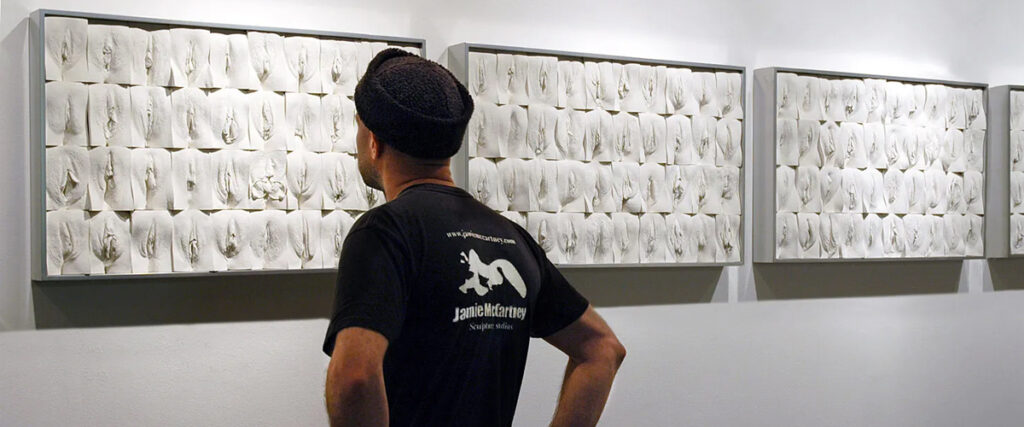
The installation
The Great Wall of Vulva consists of 400 plaster casts of vulvas arranged into ten panels in a continuous line. The project was commissioned as part of the Brighton Fringe Festival and has since toured around the world, including exhibitions at La Triennale di Milano and London’s Hay Hill Gallery.
The intention of the art installation is to celebrate and destigmatise the diversity of female genitalia while creating a sense of unity among women. Ideally, McCartney has expressed that he’d love to see the installation become part of a permanent collection at some place like the Tate Modern.
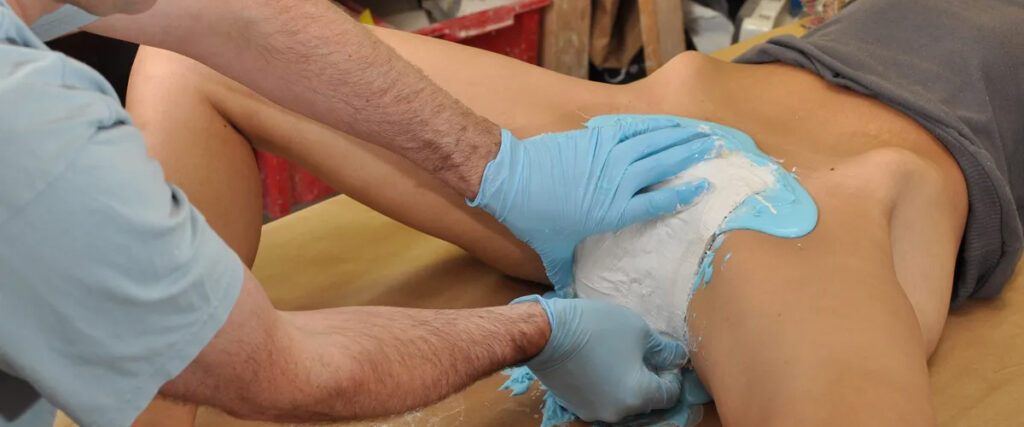
The casting process
To create the casts, McCartney used a specially-designed silicone mould. During the process, women were invited to his studio in Brighton, England, where McCartney carefully applied the mould and took impressions of each participant’s vulva. He then cast impressions in plaster and combined them to create the sculpture. The casts were made of real women of all ages, sizes, shapes, and ethnicities, creating a powerful visual representation of female diversity and sexuality.
The vulva owners
McCartney set out to make the project as inclusive as possible. With no specific requirements, the installation was open to all vulva owners who were consensually willing to make their privates public. The women who donated their vulvas for casting ranged in age from 18 to 76. There were mothers, daughters, identical twins, transgender individuals, pre and postnatal women, post-labiaplasty patients, and many others.
When questioned whether McCartney has a favourite vulva, he humbly declares to be “An equal opportunity vulva lover”. He states, “When it comes to men and the female anatomy (and sex), most men literally don’t care about genital appearance. They’re just happy to be near a vagina”.
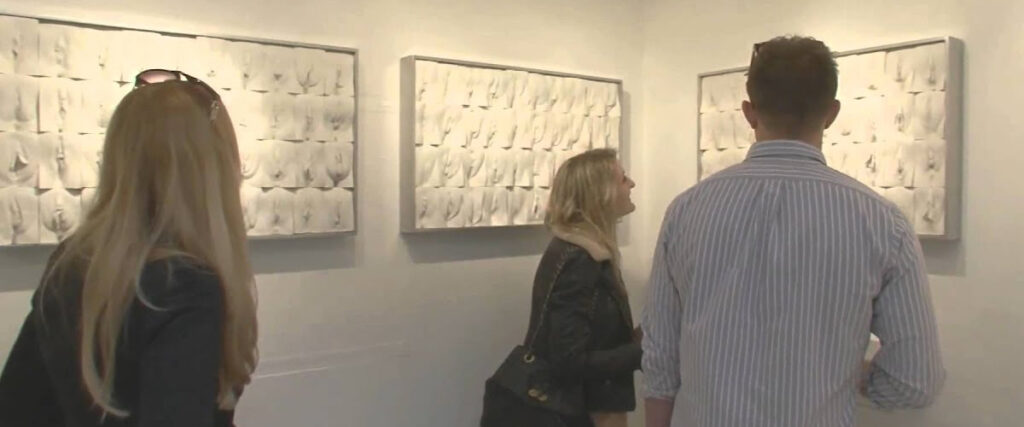
Casts as the chosen medium
As for the reason why casts were the medium chosen to portray such an important message of female empowerment, McCartney stated, “Photography doesn’t have the same effect. Photography of vulvas never escapes looking like pornography”. And if we trace back to the beginning, porn is a leading contributor to society’s warped perception of how a vulva should look in the first place.
Think about porn and the shrinking bikini line.
Women’s bikinis have gone from massive panties in the 60s to a piece of string in the 00s. So, to keep up appearances, the bikini wax also became smaller and smaller until it was considered unacceptable to have any pubes at all. Older generations of women were happy with a full bush and no visible labia. However, exposed labia have since become a thing. This has resulted in women collectively becoming more sensitive and self-conscious toward the appearance of their vulva. It seems that wherever a company can create anxiety, money can be made.
“It’s like the last bastion has been breached, and suddenly what’s in women’s pants is subject to scrutiny and marketing”.
Unfortunately, with the increasing exposure to labia, more and more women are seeing plastic surgeons for labiaplasty and cosmetic surgery to achieve the perfect “designer vagina”. Proving the true importance of McCartney’s work is helping women to realise they are normal. They are naturally beautiful.
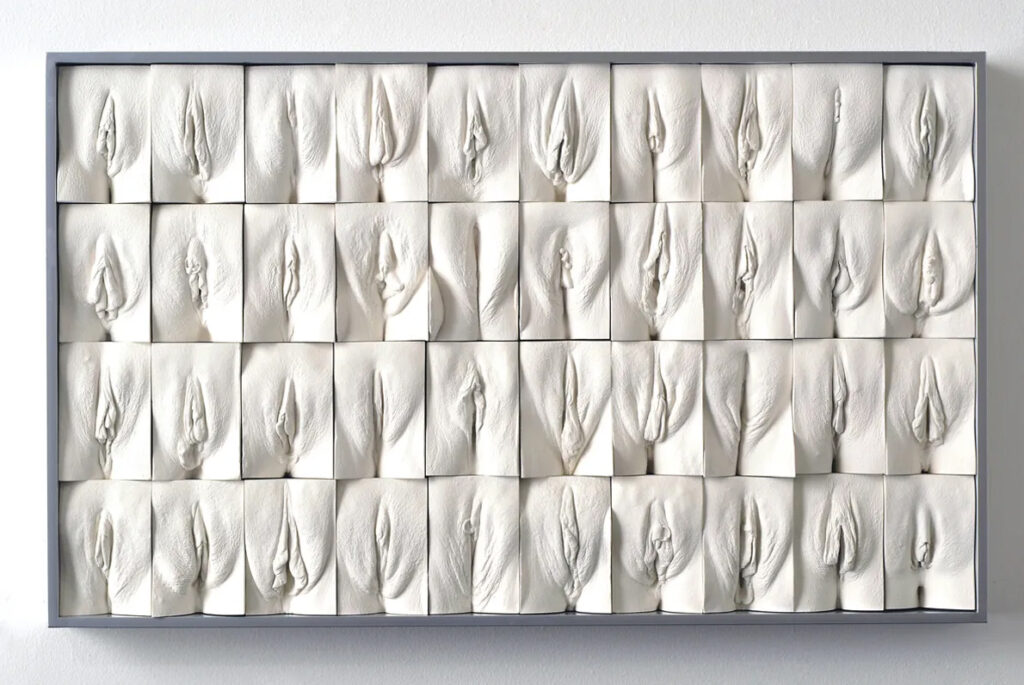
Why was the installation originally titled The Great Wall of Vagina?
Using humour to gauge interest and push past people’s natural resistance, McCartney originally titled the installation, The Great Wall of Vagina. In 2006 when the installation was created, correctly labelling the project with the term ‘Vulva’ could have led to zero interest. Back then, nobody knew what a vulva was, let alone where to find one. McCartney says,
“If you want to attract the greatest number of people, or interest, then it’s important to use the language that people understand”.
However, one thing McCartney failed to consider was how badly puns translate into other languages. In fact, they don’t. Globally, The Great Wall of Vagina failed on so many levels.
Gender backlash
Another factor McCartney failed to consider was the gender backlash associated with being a man casting female privates. Thinking that gender wasn’t relevant when trying to create a project of meaning and importance, McCartney was constantly struck with criticism, with one memorable person claiming they “liked the installation until realising there was a cis-white-male behind it”.
When McCartney first set out to create The Great Wall of Vagina, nobody in the art world was doing anything similar. There was no place for anyone to see what normal labia looked like other than medical texts with outdated diagrams of the typical one-size-fits-all women’s genitals. That’s precisely why the installation ended up being so big. It started conversations. It led to greater education for many women and men.

The changing of “Vagina”
According to The Great Wall of Vulva website, on the 3rd of November 2022, McCartney installed a photographic copy of the sculpture in Lisbon. He hand-signed, numbered and titled each of the ten panels, The Great Wall of Vagina Vulva!. The strikethrough and exclamation mark maintained the humour from the original title whilst symbolising the installation’s transition into modern times.
The Great Wall of Vagina was loved at first. As education and language evolved, it was often pointed out that the installation had no casts of vaginas. This fact grew into an overarching criticism and personal attack of McCartney being “just another cis white male” who is dangerously spreading misinformation and potentially harming women.
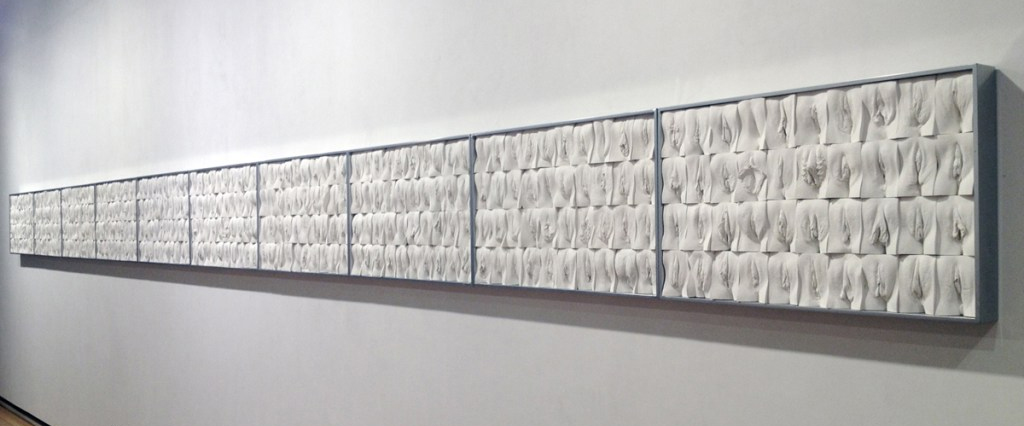
The takeaway
The key message of McCartney’s Great Wall of Vulva installation is that whatever you have between your legs is normal. It’s your normal.

